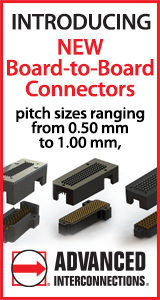|

|
|
|
||||||||
Maximum Board Temperature During Tin-Lead
Board Talk
|
||||||||
TranscriptPhil And welcome to Board Talk with Jim Hall and Phil Zarrow, the Assembly Brothers of ITM Consulting. We are here to impart on you advice regarding electronic assembly, processes, materials, equipment, questions, answers Today our question comes from S.M. IPC 709SC 6.4.2 discusses the maximum top-side board temperature for BGAs to be 150 degrees C during a tin-lead wave solder. Does anyone know how this temperature was determined? Are there supporting research papers or other IPC standards with more information? In the figure 6-25 there is a peak temperature listed for the fine pitch components over 160 C. Is there another standard that goes into this in more detail? Jim Well, we are talking about IPC specs, Phil. Perhaps you should describe the actual process by which IPC specifications are determined. Phil Okay, well they are done by committee. You have an organized consensus and they attempt to speak in things generically. I know there are people out there, among our readers, who can recite IPC specs number by number. That is good, we are happy for them. But the fact is that these things tend to be generic, generally good advice, a good starting point. Setting the committee aside there Jim, let’s go into what the application temperature is and what is going on here Jim? Jim With surface mount parts reflowed on a top-side of a board going through wave soldering, the one thing you don’t want to do is re-reflow those joints. It is always going to be below the melting temperature, in this case tin-lead 183. You also don’t want to partially melt them, where you might melt some of the joint and not the other. That is really bad. That’s why both of these things, 150 and 160 that are quoted here by S.M. are well below the melting temperature. Why BGAs would be lower, 150 vs 160? My guess is because they are concerned about warpage of the BGA packages, deforming and damaging the solder joints. Tin-lead is not rated for 150 degrees surface temperature. When you take a tin-lead joint up to 150 degrees it starts to soften. It is still solid, but it has softened and it doesn’t have as much structural strength as when it is at 120. My guess is that their concern is that because of the warpage with BGAs they don’t want to warp it too much and they don’t want to damage that solder joint from the stresses imposed by a warping package. Keeping the package temperature low and solder temperature low minimizes that possibility. That might not be so significant with another package. I don’t know what is in figure 6.5 but say it is a fine-pitch gull wing package. You don’t have as big a warping issue putting stress on those joints as you do with a BGA. Again, I’m speculating but maybe that is why the BGA temperature is lower. To answer the final question, I don’t know that there are other standards that would go into this in more detail. I can’t tell you that. Phil How do you think that applies to BTCs, Jim? Now we are talking a lot less masking in that joint there. Warpage, plastic parts. Jim Phil, my general impression, I think it is possible but most BTCs are really small and warpage has not been indicated as that big a problem as it is with BGAs. But I can’t say that with 100 percent certainty. I am going to put in a plug for the comments. All of you who hear this or read this are free to send a comment to Circuitnet and they are happy to print them. Therefore, if you are interested in this question and you are hearing it for the first time, wait a week or two and then go back and go into the archives and look up this session. See if people have commented on it. There are people out here who have more experience than Phil and I do and might be smarter and give you a better answer. Phil I think we answered S.M.’s question. Speaking of warpage and warped people, this is Phil and Jim of Board Talk advising you as you go forward, whether you are going to a pre-heat, wave solder, reflow, don’t solder like my brother. Jim And don’t solder like my brother. |
||||||||
Comments
|
||||||||
|
|

|




